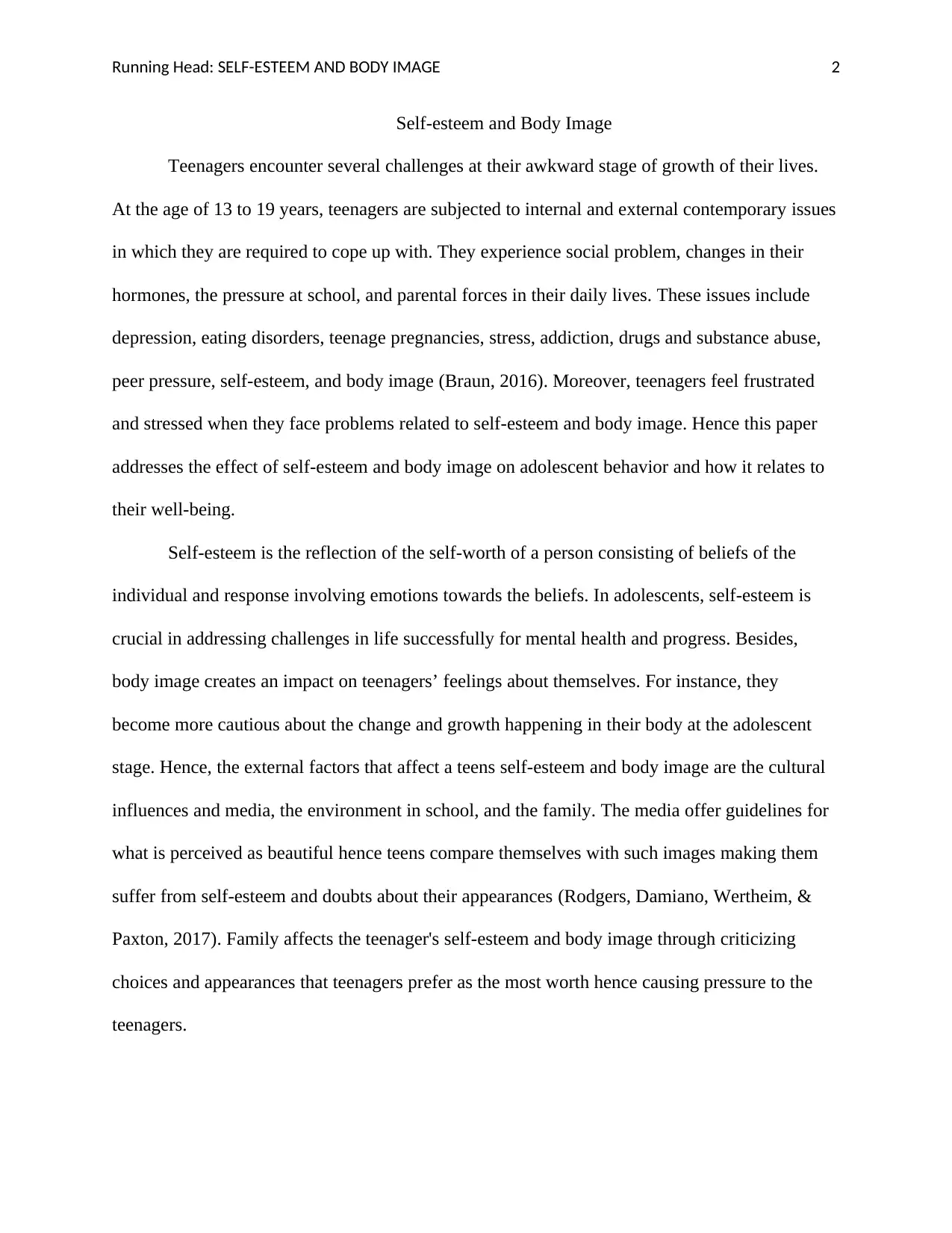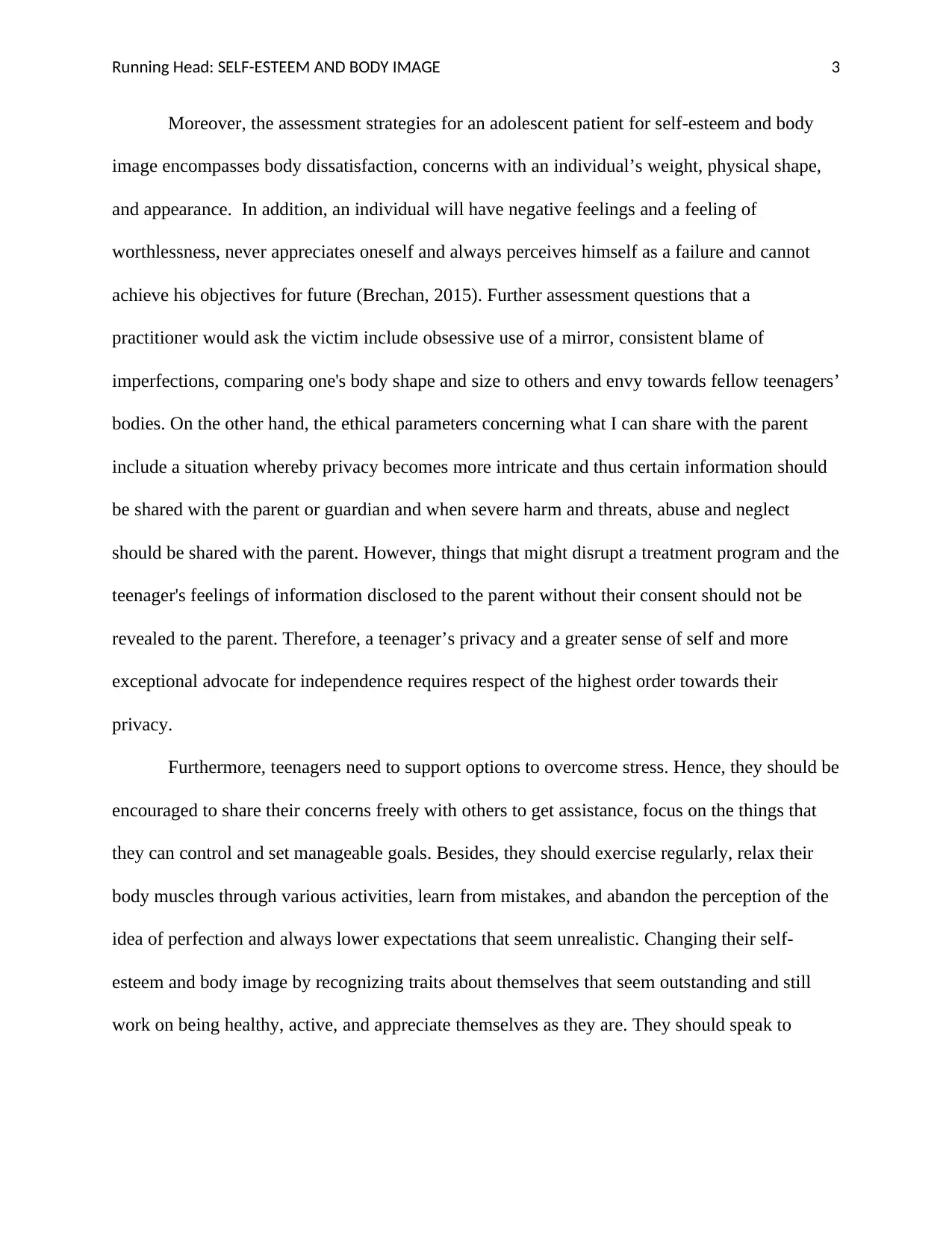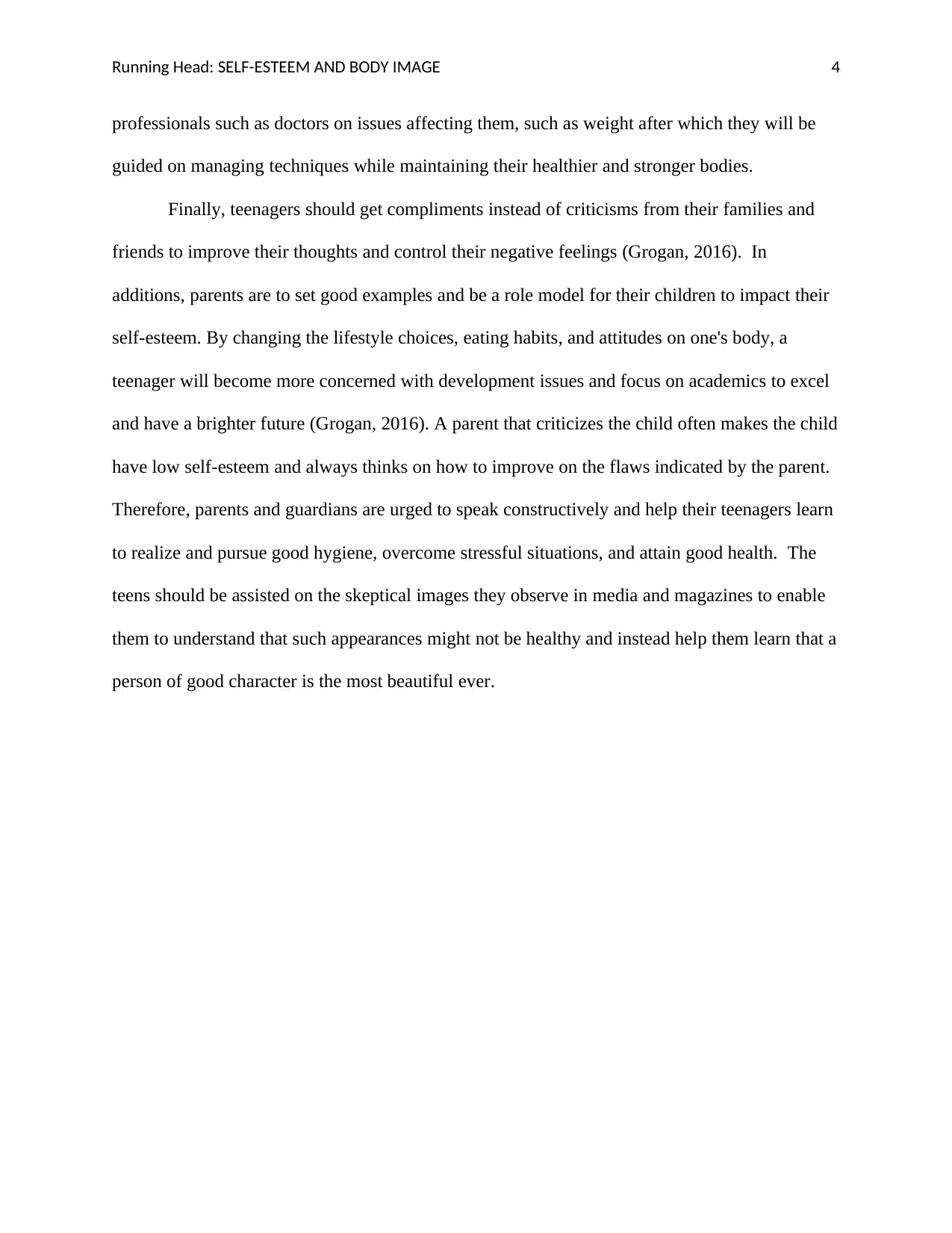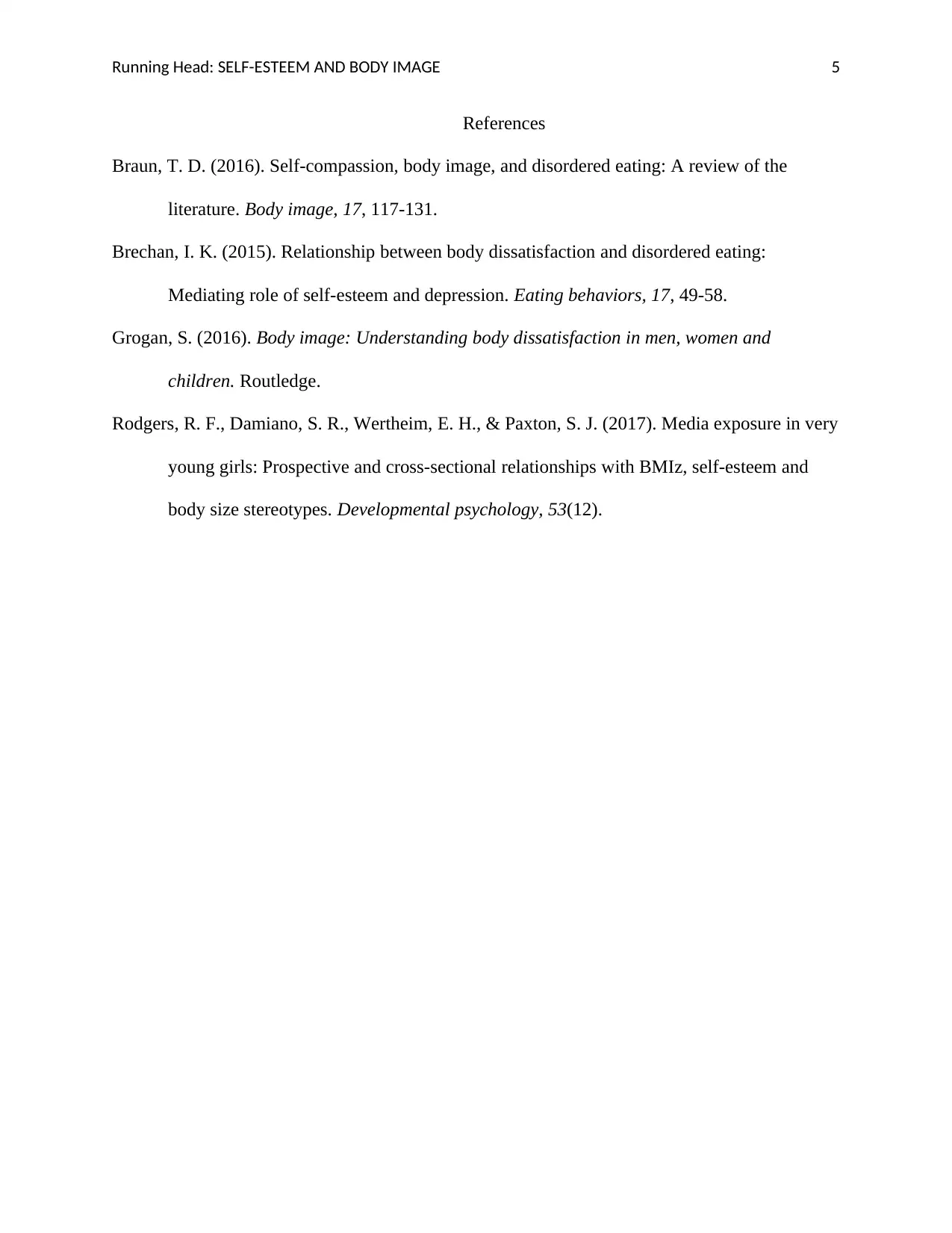Self-Esteem and Body Image: Impact on Adolescent Behavior & Well-being
VerifiedAdded on 2023/03/31
|5
|897
|113
Essay
AI Summary
This essay delves into the significant impact of self-esteem and body image on adolescent behavior and overall well-being during the critical teenage years (13-19). It highlights the various challenges teenagers face, including social pressures, hormonal changes, and academic stress, which can lead to issues like depression, eating disorders, and substance abuse. The paper emphasizes the importance of self-esteem as a reflection of self-worth and how body image, influenced by media, family, and school environments, affects teenagers' perceptions of themselves. It also discusses assessment strategies for identifying body dissatisfaction and negative self-perception, ethical considerations for sharing information with parents, and support options for teenagers to manage stress and improve their self-esteem. The essay concludes by advocating for positive reinforcement from family and friends and encouraging parents to set good examples to foster a healthy body image and promote academic success and overall well-being in adolescents. Desklib provides numerous resources for students.
1 out of 5












![[object Object]](/_next/static/media/star-bottom.7253800d.svg)